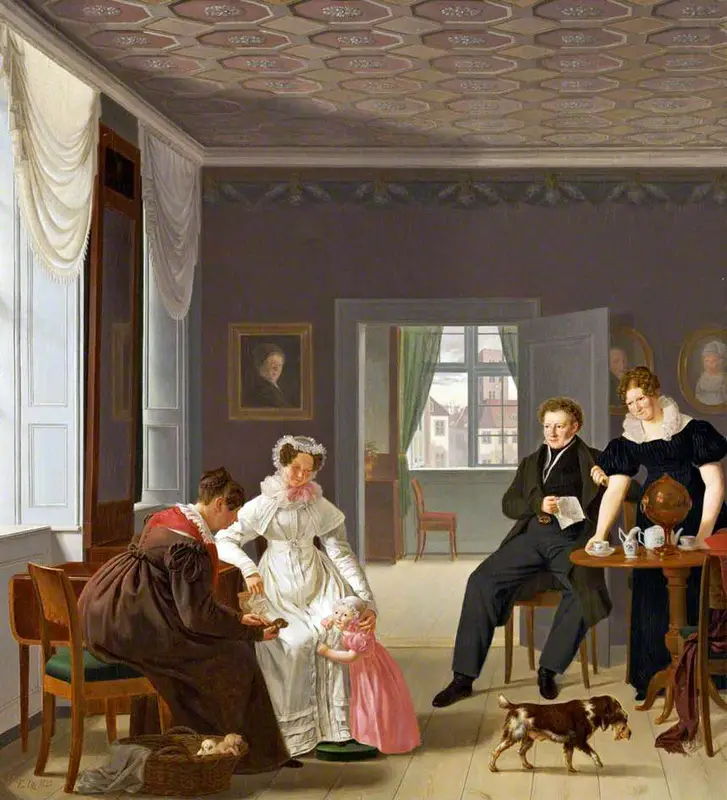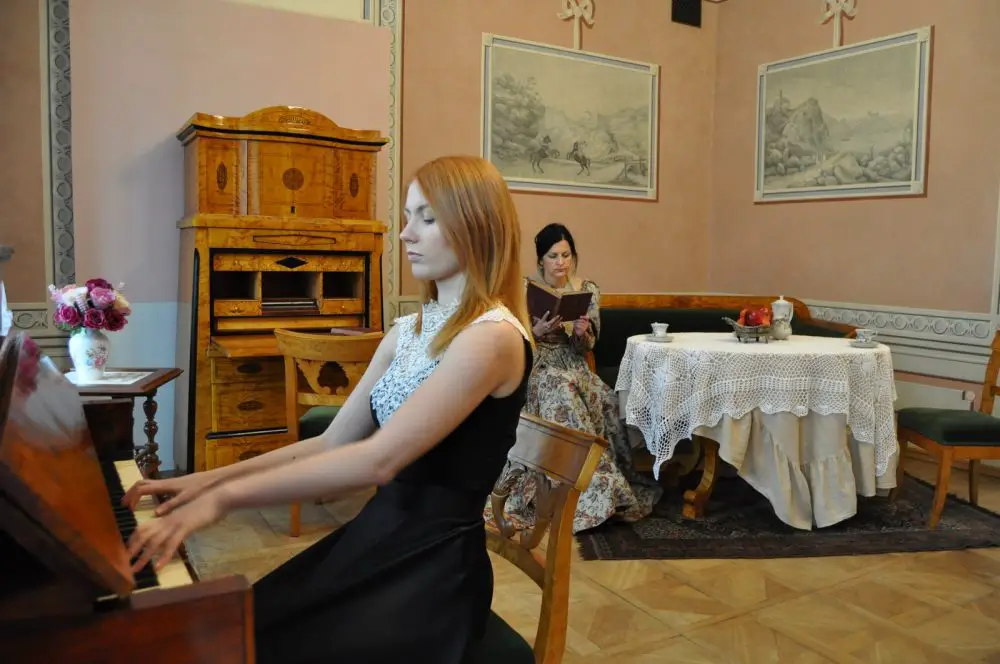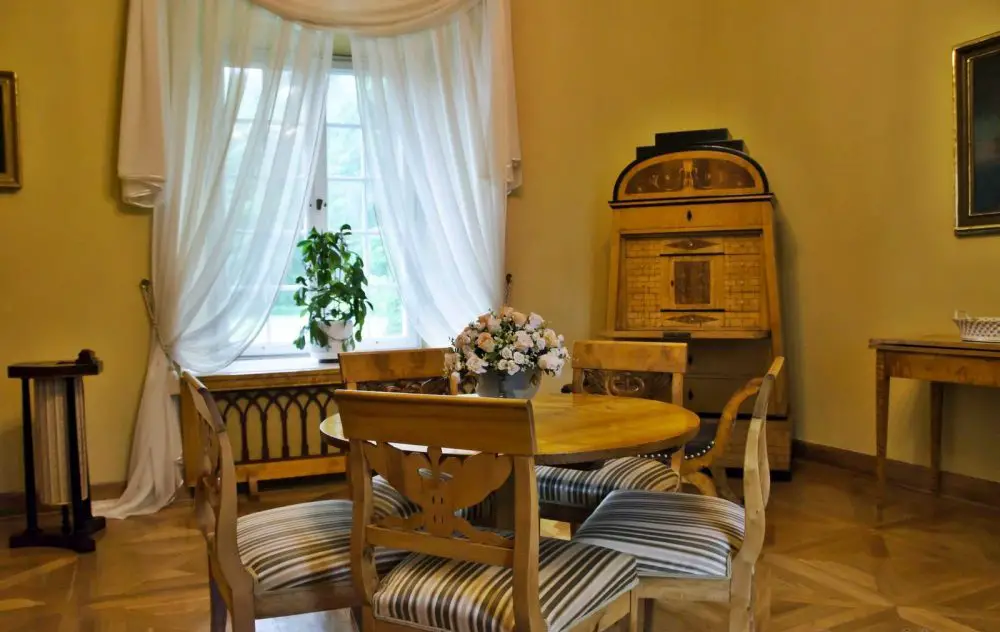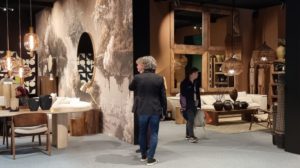In style, Biedermeier is situated between Neoclassicism and Romanticism. It was typical of the bourgeoisie that had sprung up in Germany, Austria, northern Italy and the Scandinavian countries as a result of the economic boom after the Napoleonic Wars. The period ran from 1815 to 1848, until the beginning of the European Revolution.

Pope Biedermeier, symbol of the middle class
The name of the style comes from a caricature of the time, "Papa Biedermeier", which symbolizes middle-class comfort. It's a time when family life and activities are intertwined with passions. New pieces appear in the house: the letter writing desk, the secretaire and the piano - the centerpiece of cultural gatherings. Around the latter, poems were recited, discussions took place, music was played and dancing was organized.
Biedermeier furniture derives mainly from Napoleon's French Empire style, to which it softens the stiffness and makes it more realistic, and from the Directoire, to which it adds extra weight, turning delicacy into durability. Instead of mahogany, brought from the colonies and much more expensive because of taxes, local woods such as cherryhair, frasin and oak tree. The wood is left natural or light colors are used. Sometimes colors imitating mahogany are used, which are applied on cherry wood or hairs. Metal ornaments are avoided, the style is simple and elegant.


A simpler style that does away with unnecessary elements
It's a less precious, more people-friendly style. Surfaces are not so varnished, revealing the pores of the wood and knots are no longer removed. Rarely, in contrast to the light colors, ebony accents are used. It is a style with a simple geometry, without flourishes and other unutilitarian elements. Characteristic of the period is that some pieces of furniture take on other roles, becoming more useful. For example, the round table used for displaying objects becomes the family table, surrounded by chairs, where in the evenings various activities are held.
In general, the Biedermeier style of the first half of the 19th century is a clash of ideas between Classicism and Romanticism. Over time, the style moved more towards the Romantic side. Simple and straight lines became curved, simple and austere surfaces were embellished, fantastic elements appeared in the decoration. However, the focus on brightness, simplicity and utility remain characteristic.

If you enjoyed it, you can also find out interesting facts about styles Art Nouveau, Rococo, Neogotic, Baroque, Chippendale or Shabby Chic.




































[...] It is one of the classic styles that can be discovered in many places like Chippendale and Biedermeier. [...]
Good evening!
My name is Larisa and I am from Constanta.
I am the owner of 3 pieces of furniture over 50 years old, made of solid wood, a table for 8 people, a glass cabinet with crystal windows and a large chest of drawers and cabinet with crystal mirror.
The furniture was purchased by my parents, 45 years ago, from a family of doctors who settled abroad at the time.
Since I live in a block apartment with limited floor space, I feel I have to give it up.
With consideration I ask if anyone is interested in it, I am willing to give it in installments and even as standalone pieces.
the price can be negotiated, the furniture needs some refurbishment.
Thank you